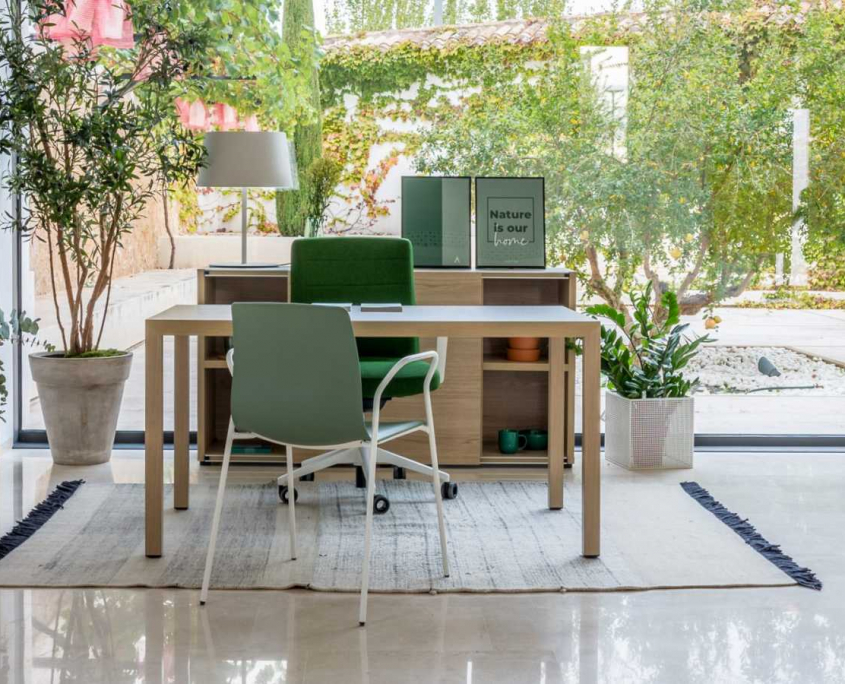Nowadays, it is impossible to talk about global health without mentioning the importance of living in healthy homes. The concept of Biohabilitability was born in 1991 by Mariano Bueno, during the Health and Habitat Congress held in Barcelona. It refers to “those parameters that are necessary for a house to be healthy for the health of its inhabitants and its surroundings”. Here you have this Decalogue published by the Association of Geobiological Studies (GEA) of Benicarló (Castellón), which will help you to make your home a healthier place for you and your family.
DECALOGUE OF THE HEALTHY HOME AND CRITERIA FOR BIOHABITABILITY
1.- HOUSING AND SURROUNDINGS
Choice of the most environmentally favourable location for the dwelling and positive urban integration in accordance with the local architecture and the surroundings (countryside, village, town, city…). Likewise, giving priority to well-kept outdoor spaces and abundant vegetation (wooded or wooded areas, parks…).
2.- OVERALL ASSESSMENT OF RISK FACTORS AROUND THE DWELLING
Ruido y contaminación acústica, fuentes de contaminación electromagnética (líneas de alta tensión, subestaciones eléctricas, transformadores, antenas de telefonía móvil o de telecomunicaciones), así como, fuentes de contaminación ambiental (vertederos, industrias contaminantes, incineradoras…), que permiten a una vivienda ser saludable para sus moradores al estar en un entorno saludable.
Noise and noise pollution, sources of electromagnetic pollution (high voltage lines, electrical substations, transformers, mobile phone or telecommunication antennas), as well as sources of environmental pollution (landfills, polluting industries, incinerators…), which allow a dwelling to be healthy for its inhabitants by being in a healthy environment.

3.- GEO-BIOLOGICAL STUDY OF THE LOCATION OF THE DWELLING
And especially of the spaces of long permanence (bedrooms, workplaces…), avoiding areas of intense terrestrial radiation, telluric or geophysical alterations, as well as the crossing of energy lines, as well as choosing areas favourable to health and life.
4.-ABSENCE OF ELECTRICAL OR ELECTROMAGNETIC POLLUTION INSIDE THE HOME
Avoiding the proximity of sources of electromagnetic pollution and also installing biocompatible electrical installations in the home (for example: shielding of cables, correct earthing, automatic electrical disconnection systems…).
5.- BIO-CONSTRUCTION CRITERIA
Bioclimatic design that takes advantage of nature’s resources to air-condition the building. Reasoned choice of construction systems and materials, giving priority to making them as efficient, comfortable, healthy and ecological as possible. Prioritise energy saving and the use of clean and renewable energies.
6.- HEALTHY AND ECOLOGICAL MATERIALS
Choice of materials, such as paints, finishes, furniture and decorative elements, according to biocompatibility and environmentally friendly (ecological) criteria. In addition, the materials must promote the health of the inhabitants, be breathable, but also have low radioactive emissions and be free of potentially toxic chemical compounds.
7.- INDOOR AIR QUALITY
Maintain a constant renewal of indoor air and adequate ionisation. As well as avoiding the introduction into the home of construction or decoration elements and cleaning products, especially those containing chemical substances that are potentially toxic, harmful to health or aggressive for the environment. In conclusion, opt for a “soft” and less aggressive chemistry. As well as making extensive use of plants to purify and clean indoor air.
8.- NATURAL LIGHTING
The orientation of the main façades towards the sun, wide openings and the choice of lamps and artificial lighting systems with maximum efficiency, as well as low energy consumption and high biological quality (full solar spectrum) are important.
9.- OPTIMAL MANAGEMENT OF NATURAL RESOURCES
Avoiding the generation of excessive domestic waste, with responsible consumption and selective separation at home. Responsible water management (saving, recycling and ecological purification). Similarly, choosing healthy food and also organically grown food.
10.- RESPONSIBILITY OF HOUSING FOR LIFE, HEALTH AND THE ENVIRONMENT
Promoting that dwellings are designed, built or rehabilitated, as well as, with criteria of environmental awareness and responsibility. Being aware of the implication that housing has, firstly, on the health of its inhabitants and secondly, as a risk factor or environmental impact. Also, ensuring that homes and workplaces meet, as far as possible, as well as minimum energy hygiene criteria and progressively implement BIOHABITABILITY criteria.










